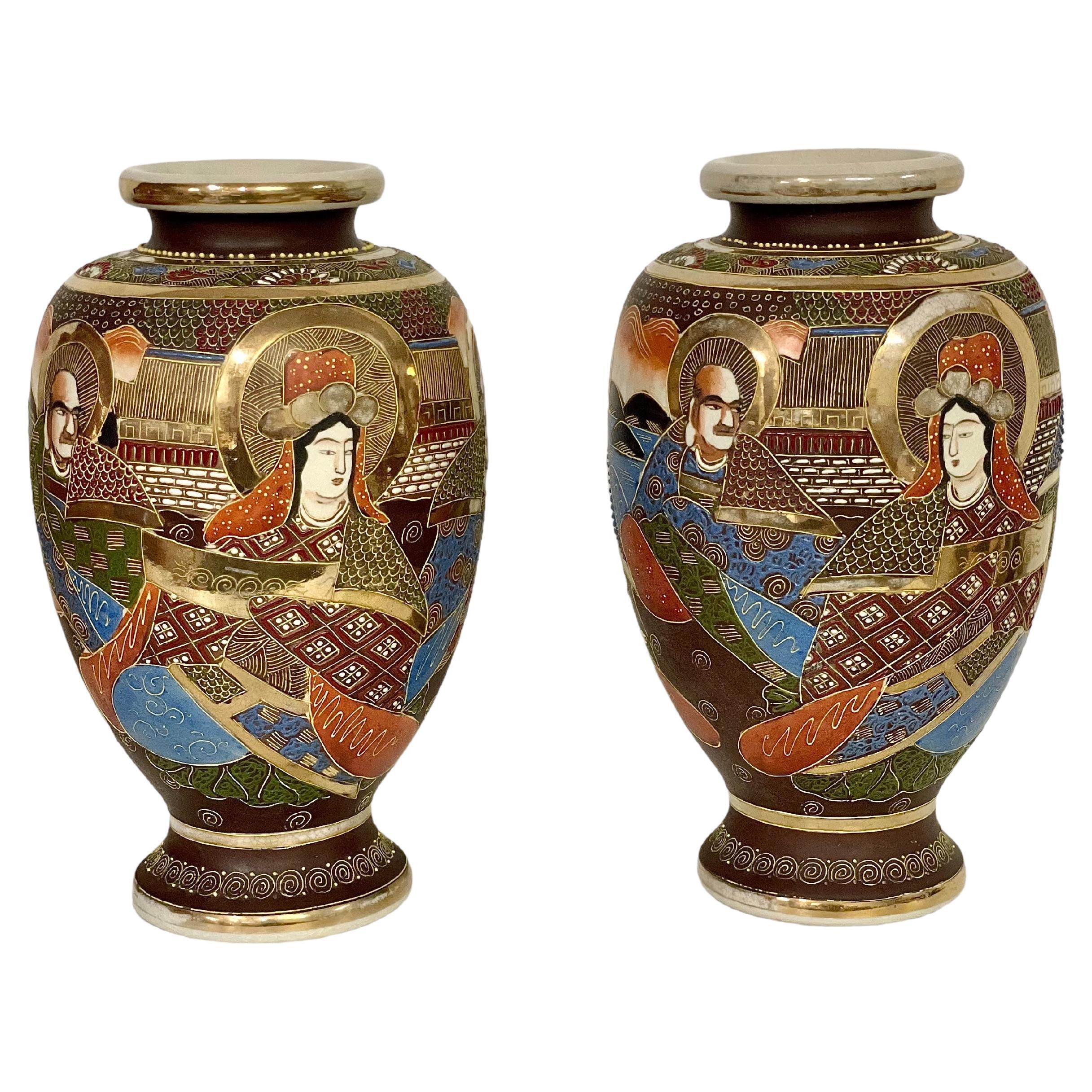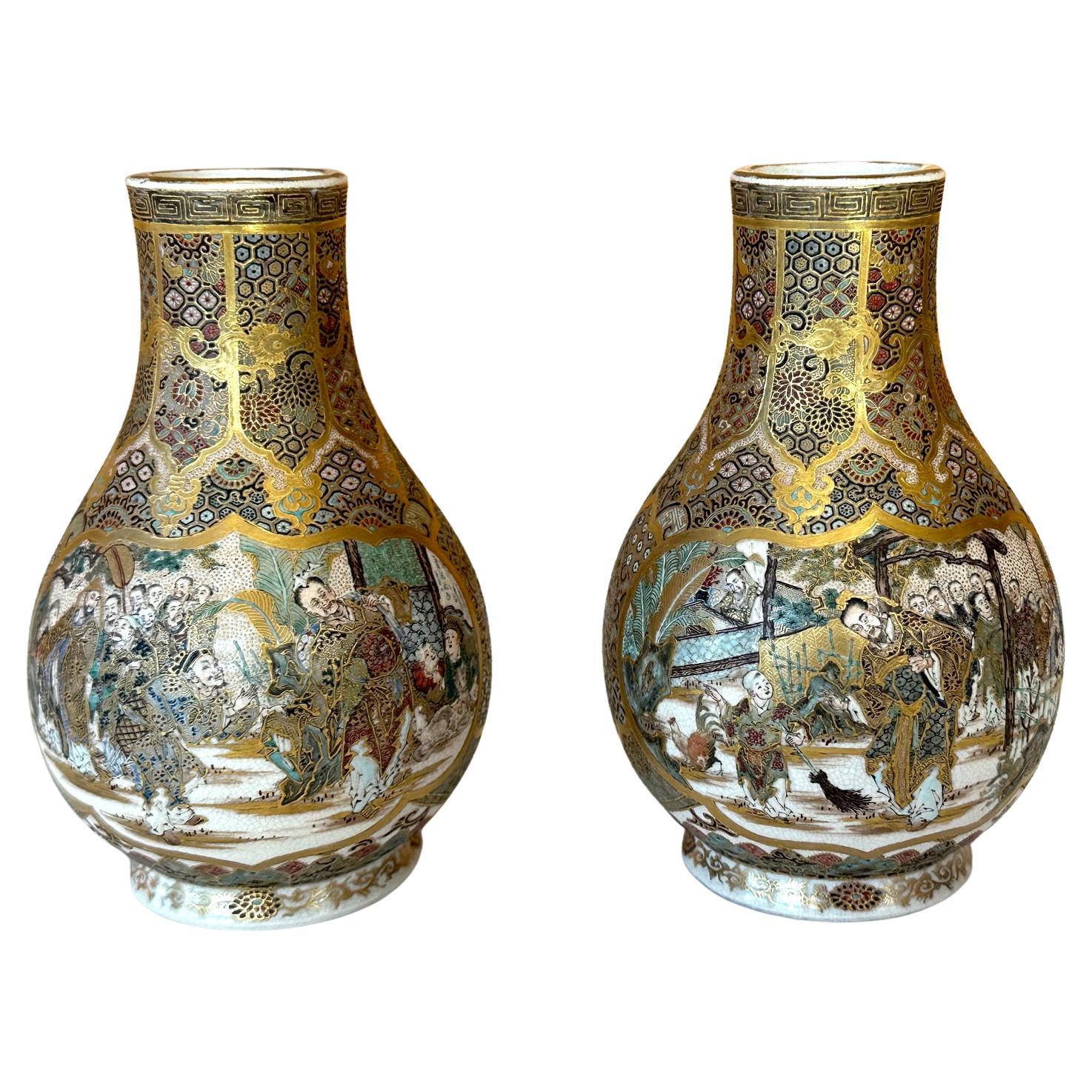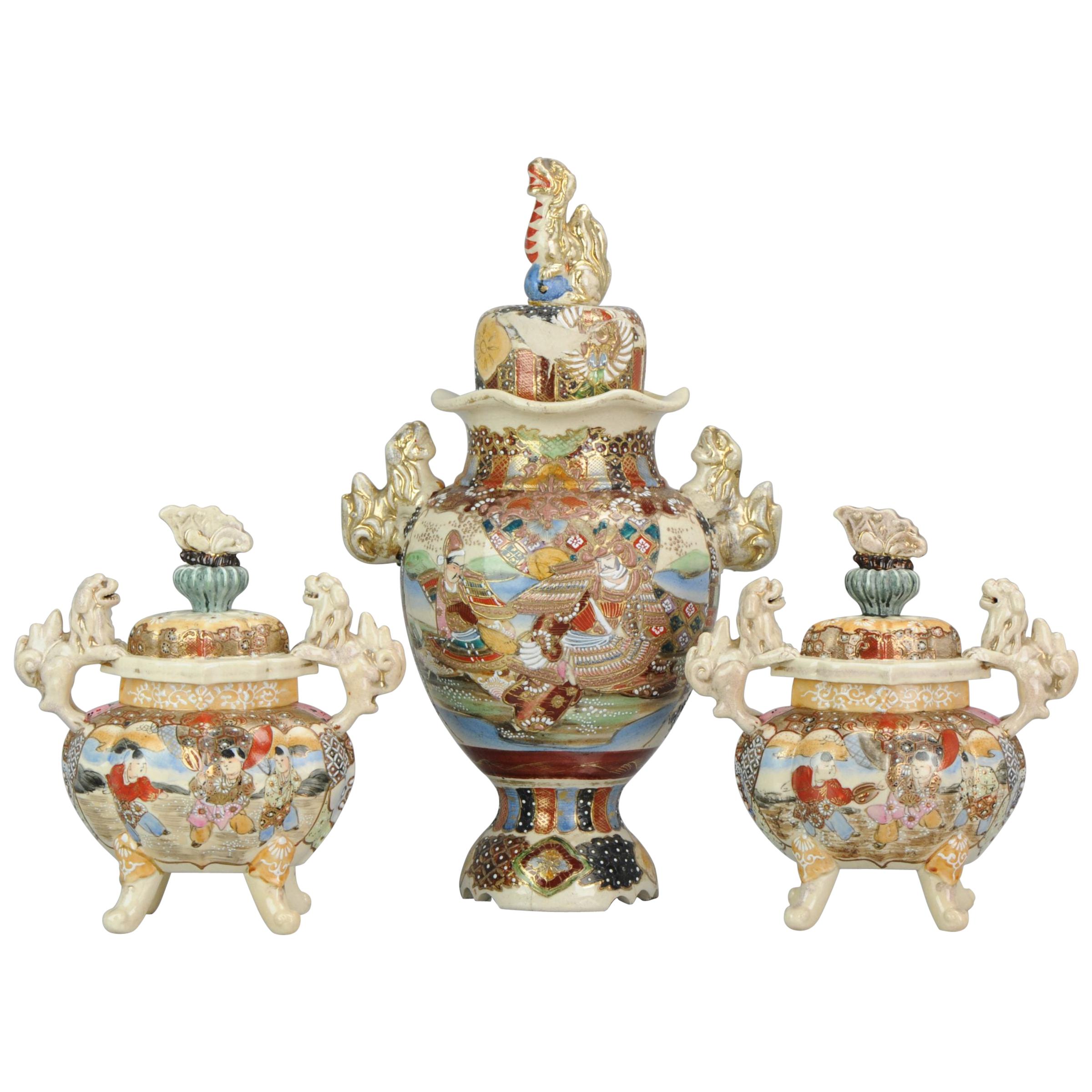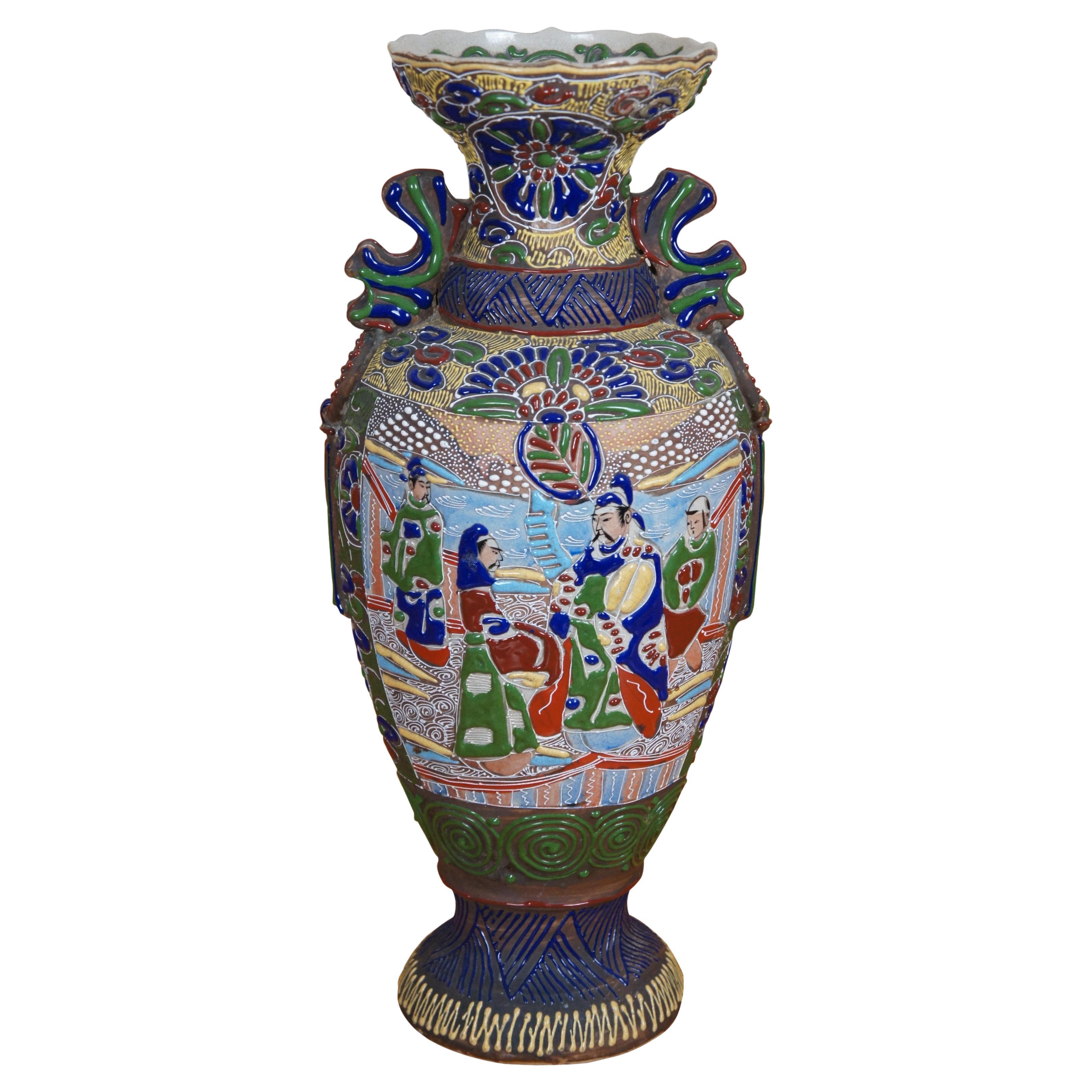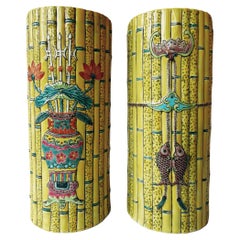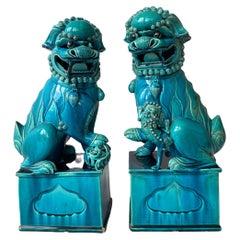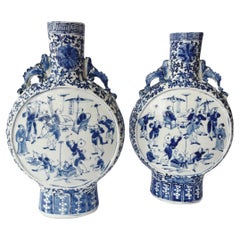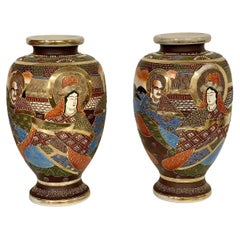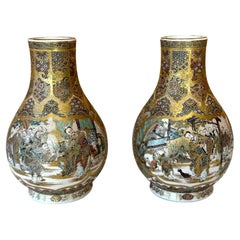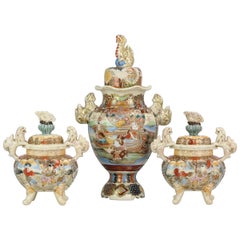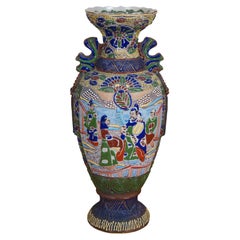Items Similar to Pair of Japanese Moriage Satsuma Vases with Gold Gilding Circa 1930-1940
Video Loading
Want more images or videos?
Request additional images or videos from the seller
1 of 19
Pair of Japanese Moriage Satsuma Vases with Gold Gilding Circa 1930-1940
About the Item
Japanese Satsuma vases from the circa 1930-1940 period are a particular style of ceramic art that originated from the Satsuma province of Japan. Satsuma ware is renowned for its intricate hand-painted designs, rich colors, and distinctive crackled glaze.
Satsuma ware dates back to the early 17th century, but it gained widespread popularity in the late 19th and early 20th centuries, including the 1930s and 1940s. Satsuma vases produced during this time often reflected a mix of traditional and modern influences, as Japan went through a period of cultural exchange and artistic experimentation.
Satsuma vases are made from a type of Japanese earthenware clay known for its fine texture and malleability. The vases are hand-formed or wheel-thrown and then meticulously hand-painted with intricate designs using enamel paints. The distinctive crackled glaze was achieved by firing the vases at a relatively low temperature, allowing the glaze to crack during the cooling process.
The moriage technique involves applying three-dimensional, raised ornamentation to the surface of the ceramic piece, creating a visually textured and layered effect. Artisans create three-dimensional patterns, designs, or intricate motifs using a special mixture of clay, slip, or porcelain paste. The raised elements are added by hand to the ceramic body, and each detail is carefully shaped to achieve the desired effect.
The moriage is then gold gilded as some of the intricate ornamental patterns and the halos around the three immortal figures depicted on each vase. The decoration is of Kannon with a rakan on each side of her. In Buddhist iconography, Kannon (also known as Kuan Yin or Avalokiteshvara) is a Bodhisattva associated with compassion and mercy. Bodhisattvas are enlightened beings who have chosen to postpone their own enlightenment to help alleviate the suffering of all sentient beings. The imagery of Kannon flanked by a rakan on each side is a common representation in Buddhist art, especially in Japan. The rakan are individuals who have attained a high level of spiritual realization and enlightenment. They are considered disciples of the Buddha and are revered for their wisdom and guidance on the path to enlightenment. The composition of Kannon with a rakan on each side emphasizes the interconnectedness of compassion, wisdom, and enlightenment.
The other side depicts a priest in front of a temple, with the Kunlun mountains depicted in the background – where all immortals reside.
Mark attributed to late Showa or Taisho period
- Dimensions:Height: 12.8 in (32.5 cm)Diameter: 7.29 in (18.5 cm)
- Sold As:Set of 2
- Style:Showa (Of the Period)
- Materials and Techniques:
- Place of Origin:
- Period:
- Date of Manufacture:1930-1940
- Condition:Wear consistent with age and use.
- Seller Location:Ixelles, BE
- Reference Number:1stDibs: LU8924235547102
About the Seller
No Reviews Yet
Vetted Professional Seller
Every seller passes strict standards for authenticity and reliability
1stDibs seller since 2023
- ShippingRetrieving quote...Shipping from: Ixelles, Belgium
- Return Policy
Authenticity Guarantee
In the unlikely event there’s an issue with an item’s authenticity, contact us within 1 year for a full refund. DetailsMoney-Back Guarantee
If your item is not as described, is damaged in transit, or does not arrive, contact us within 7 days for a full refund. Details24-Hour Cancellation
You have a 24-hour grace period in which to reconsider your purchase, with no questions asked.Vetted Professional Sellers
Our world-class sellers must adhere to strict standards for service and quality, maintaining the integrity of our listings.Price-Match Guarantee
If you find that a seller listed the same item for a lower price elsewhere, we’ll match it.Trusted Global Delivery
Our best-in-class carrier network provides specialized shipping options worldwide, including custom delivery.More From This Seller
View AllPair of 19th Century Qing Dynasty Faux Bamboo Chinese Vases
Located in Ixelles, BE
Faux bamboo Chinese vases were a type of decorative art that emerged during the Qing Dynasty (1644-1912) in China. These porcelain vases were designed to mimic the appearance of bamboo, a plant highly regarded in Chinese culture for its resilience, elegance, and symbolism. Bamboo is associated with attributes such as flexibility, strength, and modesty, making it a popular motif in Chinese art.
In the Qing Dynasty the color yellow held significant symbolism and represented imperial authority, power, and the emperor himself. Yellow was considered the most sacred and prestigious color in Chinese culture, and it had strong associations with the emperor's position as the Son of Heaven and the ruler of all under heaven.
The marks at the bottom of the vases indicate that these were crafted more specifically during the Tongzhi period – an emperor who reigned from 1861 to 1875, which effectively lasted nthrough his adolescence and was largly overshadowed by the rule of his mother, Empress Dowager Cixi. Although he had little influence over state affairs, the events of his reign gave rise to what historians call the “Tongzhi Restoration”, an unsuccessful modernization program.
The polychrome enamels representing on one vase a traditional Chinese kite...
Category
Antique Late 19th Century Chinese Chinese Export Ceramics
Materials
Porcelain
Large Pair of Graduated Turquoise Porcelain Foo Dogs. Chinese Circa 1880
Located in Ixelles, BE
Chinese turquoise-colored porcelain foo dogs from circa 1880 are exquisite examples of traditional Chinese ceramic art. Foo dogs, also known as guardian lions or temple lions, are ic...
Category
Antique Late 19th Century Chinese Qing Ceramics
Materials
Ceramic
Pair of Moon-Shaped Vases, China Late 19th Century
Located in Ixelles, BE
A pair of large moon-shaped "flasks" vases painted in blue and white, each flask decorated with scenes of active characters and surrounded by borders of floral motifs and foliate pat...
Category
Antique Late 19th Century Chinese Antiquities
Materials
Porcelain
$61,922 Sale Price / set
20% Off
Antoine Giroux Fauvist Painting - Still Life with Fruit - Ref 238
By Antoine Giroux
Located in Ixelles, BE
Antoine Giroux: Capturing the Vibrancy of the Mediterranean
Born in Brussels in 1955, Antoine Giroux's journey to artistic expression took a unique path through the realms of music ...
Category
Late 20th Century Belgian Modern Paintings
Materials
Wood, Paint
Antoine Giroux Fauvist Painting - Still Life - Ref 176
By Antoine Giroux
Located in Ixelles, BE
Antoine Giroux: Capturing the Vibrancy of the Mediterranean
Born in Brussels in 1955, Antoine Giroux's journey to artistic expression took a unique path through the realms of music ...
Category
Mid-20th Century Belgian Paintings
Materials
Wood, Paint
Antoine Giroux Fauvist Painting - Corsica - Ref 040
By Antoine Giroux
Located in Ixelles, BE
Antoine Giroux: Capturing the Vibrancy of the Mediterranean
Born in Brussels in 1955, Antoine Giroux's journey to artistic expression took a unique path through the realms of music ...
Category
Mid-20th Century Belgian Paintings
Materials
Canvas, Paint
$1,700 Sale Price
20% Off
You May Also Like
Pair of Japanese Satsuma 'Moriage' Porcelain Gilt Vases
By Satsuma
Located in LA CIOTAT, FR
This handsome pair of 20th century glazed and gilded Japanese Satsuma vases, with their vivid, jewel-like colours and elegant baluster-shaped forms, feature the traditional Japanese ...
Category
20th Century Japanese Ceramics
Materials
Porcelain
$1,960 Sale Price / set
20% Off
Pair of Fine Miniature Satsuma Vase with Moriage Enamel Decoration by Seikozan
Located in Atlanta, GA
A pair of small ceramic vases with superb surface decorations made by Japanese studio Seikozan circa 1890-1910s (late Meiji Period). One of the many artist studios that specialized i...
Category
Antique 1890s Japanese Meiji Ceramics
Materials
Ceramic
Large 1900-1930 Satsuma Antique Garniture Japanese Colorful Vases, Japan
Located in Amsterdam, Noord Holland
Great pieces, nice interior addition.
Condition
Biggest vase both lid and vase were restored, foot also. Small vases in good condition, only a chip to nose of one of the dogs. ...
Category
20th Century Chinese Showa Ceramics
Materials
Porcelain
$1,090 Sale Price / set
20% Off
Antique Japanese Meiji Moriage Satsuma Wise Man Baluster Mantel Vase 17"
Located in Dayton, OH
Antique Meiji period Japanese satsuma style moriage vase featuring a multicolored floral enamel design in bold relief framing two scen...
Category
Antique Late 19th Century Meiji Ceramics
Materials
Porcelain
$380 Sale Price
20% Off
Pair of Antique Japanese Satsuma Vase Japanese Satsuma Ware Lovely Ladies
Located in Amsterdam, Noord Holland
Fabulous Japanese vases with an all around scene of lovely ladies, 19th century.
Marked at base,
?? Yasui
Condition
Overall condition vase 1 perfect, just some minimal enamel...
Category
Antique 19th Century Japanese Meiji Ceramics
Materials
Earthenware
$1,571 Sale Price
20% Off
Pair of Blue Ground Japanese Satsuma Vases
By Satsuma
Located in Norwood, NJ
These are a very good quality pair of earthenware Japanese Satsuma vases, beautifully hand decorated and from the Meiji period, circa 1880. The vases...
Category
Antique Late 19th Century Japanese Meiji Ceramics
Materials
Ceramic, Earthenware
Recently Viewed
View AllMore Ways To Browse
1930 Japan
Japanese Earthenware
Satsuma Vases
Earthenware Pottery Japanese
Antique Satsuma Vase
Japanese Porcelain With Figures
Japanese Vases With Figures
Japanese Circa 1940
Satsuma Pottery
Japanese Satsuma Pottery
Gilt Fire Back
Satsuma Style
Antique Japanese Porcelain Figures
Japanese Showa Period Vase
17th Gold Enamel
17th Century Japanese Vase
17th Century Buddha
Japanese Crackle Vase
